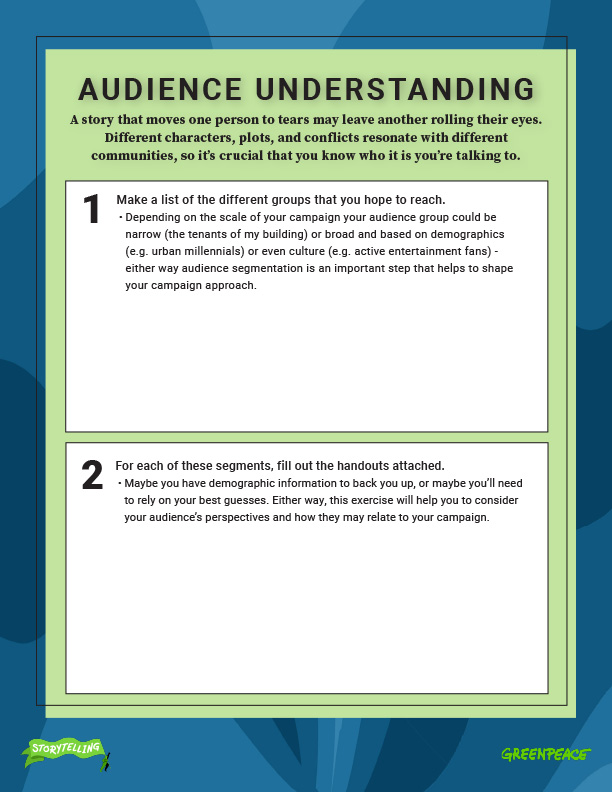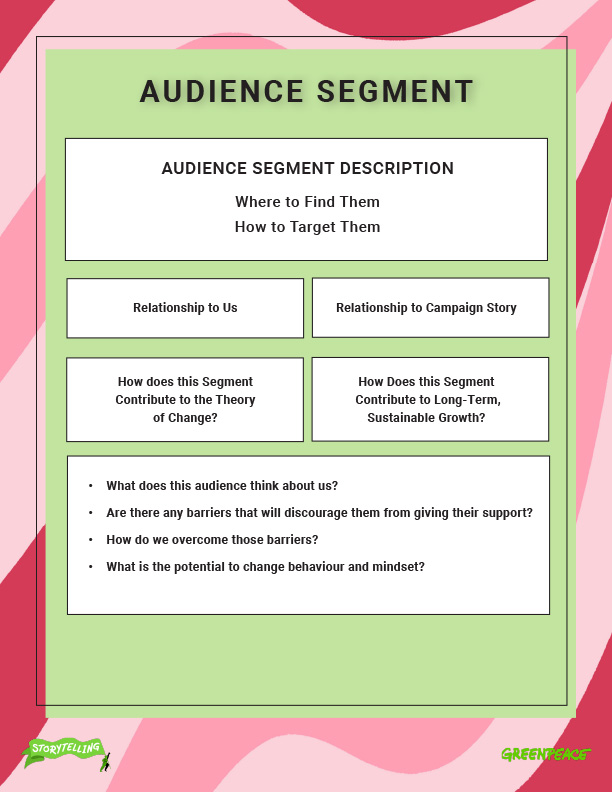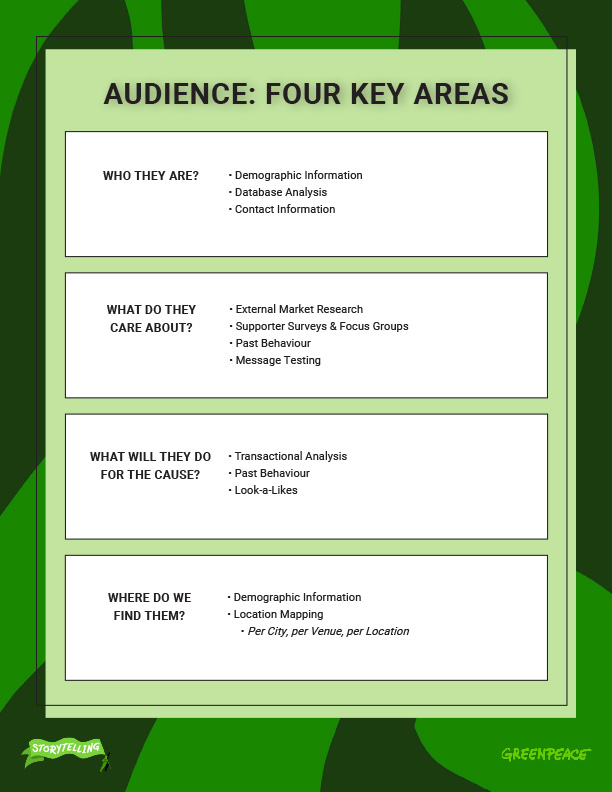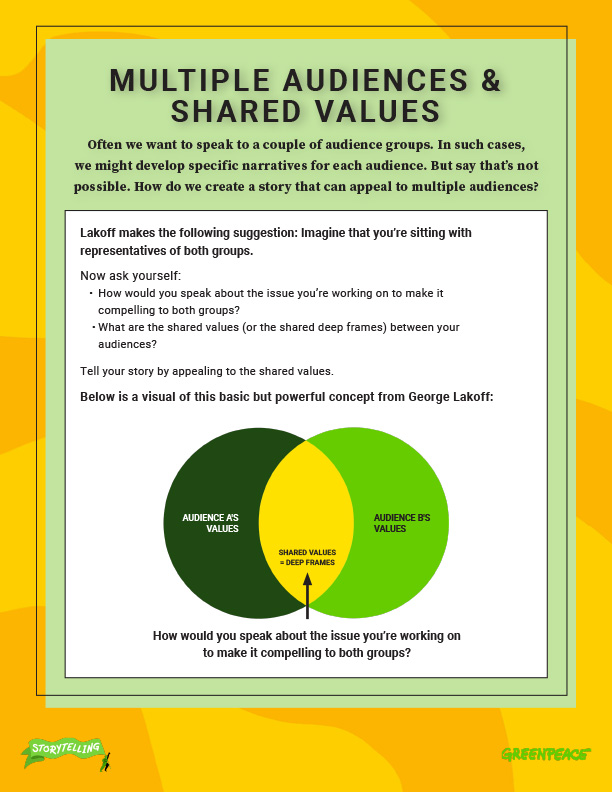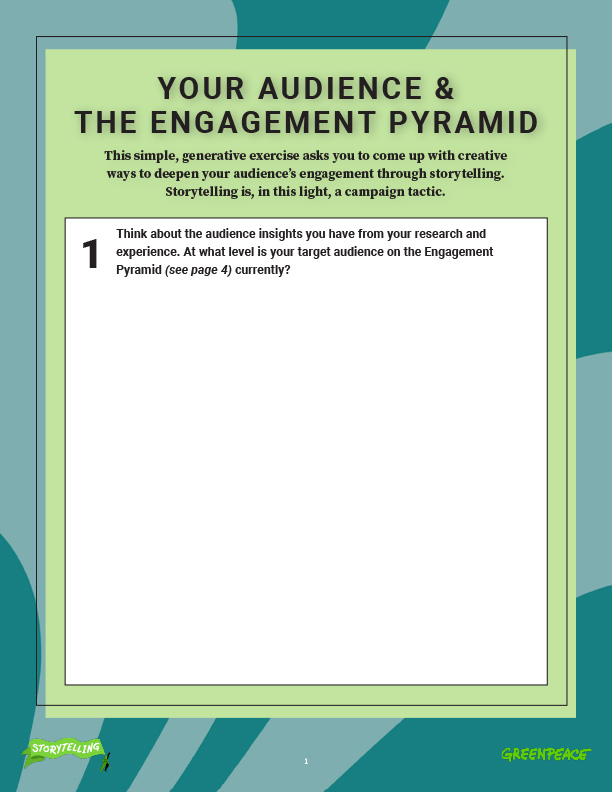STEP THREE: KNOW YOUR AUDIENCE
A successful campaign calls on the values and needs of its listeners. Who are we talking to? What are we asking of them? How do we connect with them?
IDENTIFY YOUR TARGET AUDIENCE

Any act of storytelling involves a two-way relationship between a storyteller and an audience. As we work on a narrative, it’s important that we’re clear on who our audience is. Are we trying to persuade urban millennials? Small business owners in your community? Farmers living in a rural village? Different types of stories will appeal to each group.
To determine your target audience, try some classic campaigning exercises such as those shared by our friends at 350.org (building a spectrum of allies or a power map) to figure out who you need to move to reach your goals.
At the same time, it’s important to balance short term campaign goals with longer term organisational or movement priorities. Either way, focus on your target audience.
RESEARCH YOUR AUDIENCE(S)

What stories do we want to challenge, and how do we offer a compelling alternative, one that will ring true to the audiences we want to engage?
Stories are always in conversation. And sometimes those stories will come into conflict. Think of any contentious political issue. Surely, there’s someone—a politician, a corporate spokesperson, even a friend or family member—whose narrative about that issue is directly opposed to your own.
It can be helpful to place these conflicting narratives into two different categories. A dominant narrative is a story that serves the interests and ideologies of a dominant social group (not necessarily the majority social group, but the group with power over the issues you’re interested in tackling). In the work that we do, these will usually be the narratives of our opponents. For example, a dominant narrative might insist that environmental regulations will hurt economic growth.
We want to fully understand the dominant narratives at play in our issue. Here is an exercise to analyse the landscape of dominant narratives.

